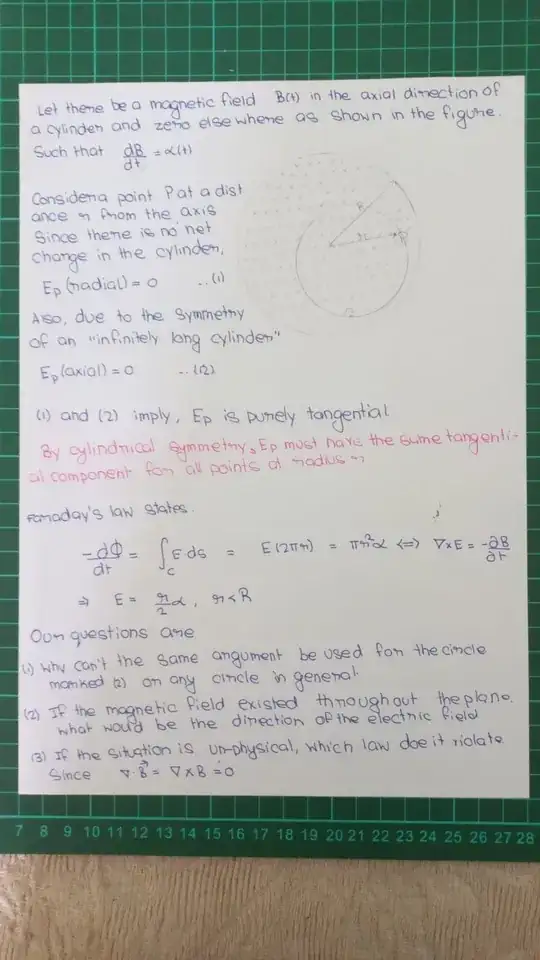My class had a doubt about the direction and magnitude of the electric field in the presence of a time varying but uniform magnetic field.
Specifically about the symmetry arguments to determine the fact that the electric field must be tangential about the "centre of the circle", but our doubt is why a particular circle should be considered as opposed to any other circle since the magnetic field is uniform and doesn't depend of the distance to any circle.
Further, if the magnetic field pervaded the entire field, in what direction would the induced electric field be.
We came to the conclusion that the situation must be unphysical, but since both the divergence and the curl of the magnetic field are zero in the latter case we are confused as to which law the situation violates
